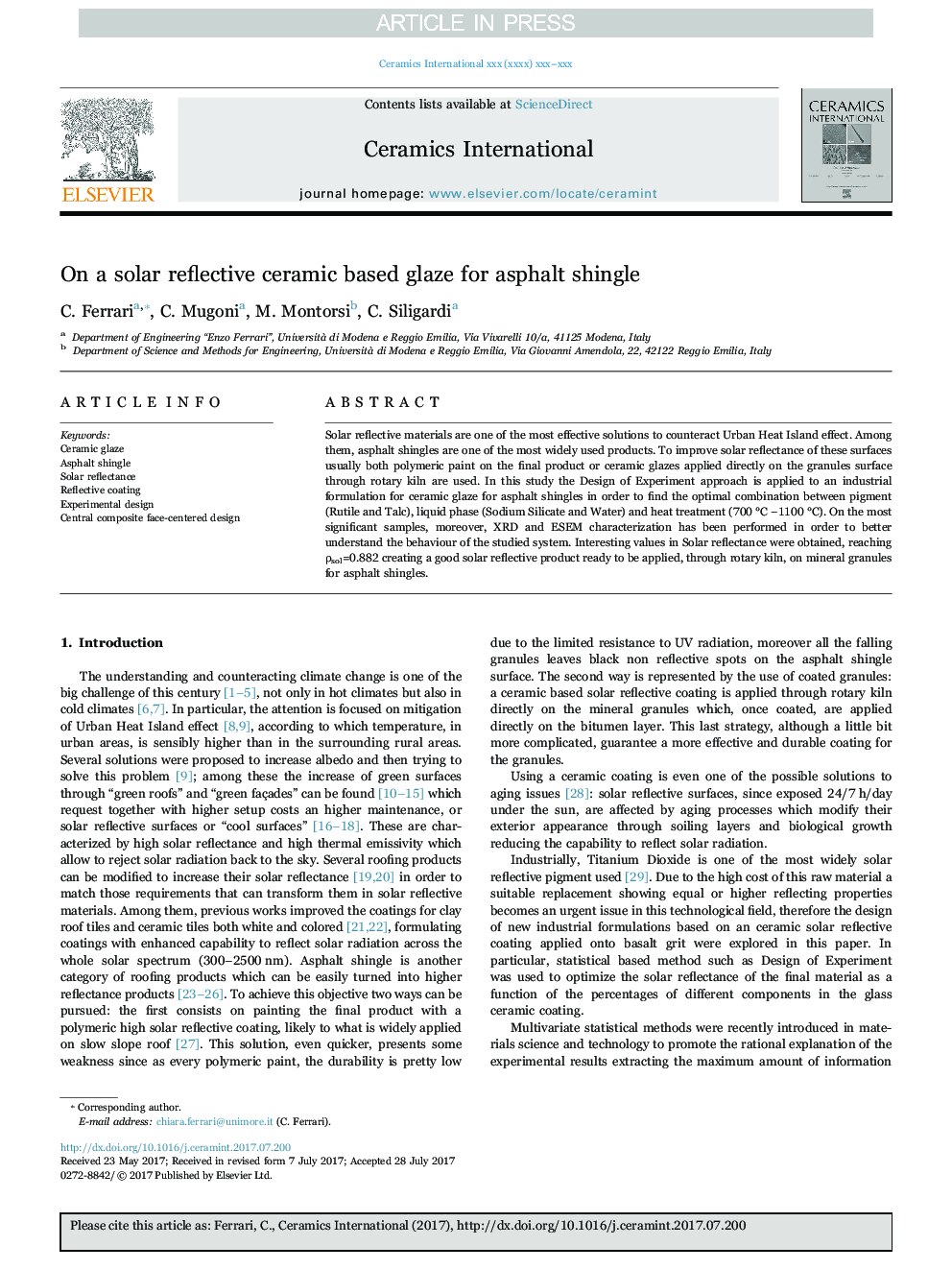| Article ID | Journal | Published Year | Pages | File Type |
|---|---|---|---|---|
| 5437349 | Ceramics International | 2017 | 8 Pages |
Abstract
Solar reflective materials are one of the most effective solutions to counteract Urban Heat Island effect. Among them, asphalt shingles are one of the most widely used products. To improve solar reflectance of these surfaces usually both polymeric paint on the final product or ceramic glazes applied directly on the granules surface through rotary kiln are used. In this study the Design of Experiment approach is applied to an industrial formulation for ceramic glaze for asphalt shingles in order to find the optimal combination between pigment (Rutile and Talc), liquid phase (Sodium Silicate and Water) and heat treatment (700 °C â1100 °C). On the most significant samples, moreover, XRD and ESEM characterization has been performed in order to better understand the behaviour of the studied system. Interesting values in Solar reflectance were obtained, reaching Ïsol=0.882 creating a good solar reflective product ready to be applied, through rotary kiln, on mineral granules for asphalt shingles.
Related Topics
Physical Sciences and Engineering
Materials Science
Ceramics and Composites
Authors
C. Ferrari, C. Mugoni, M. Montorsi, C. Siligardi,
